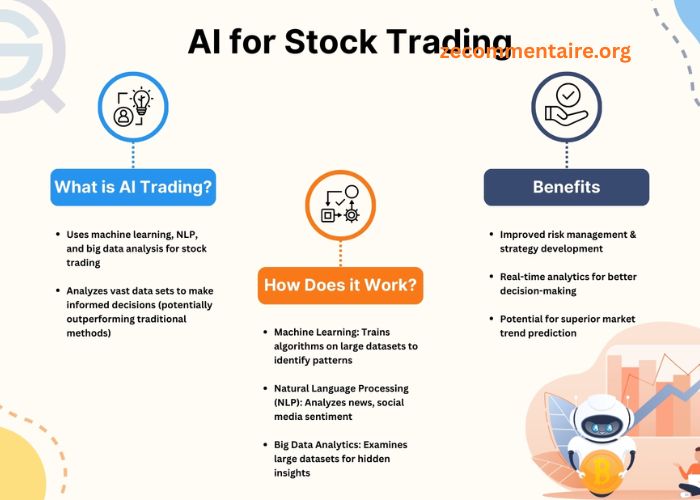Success in the current markets is characterised by speed and accuracy. Throughout each split-second trade, there is a sophisticated system of code, logic, and automation. Modern markets are based on these stock trading algorithms, which process millions of orders each day efficiently in a way that humans cannot match. The concepts of how these algorithms work at scale can assist investors in understanding what causes liquidity, price discovery and volatility in financial markets.
What Are Stock Trading Algorithms?
The stock trading algorithms are automated systems that are used to conduct and place trades as per a set strategy. They process market information, discover trading opportunities and place orders – all in milliseconds.
Mathematical models, technical indicators and market signals are used to construct these algorithms. They mainly aim at optimising entry and exit points, cost reduction and minimising human error.
Algorithms are applied by institutions, hedge funds, and even retail platforms to manage a large volume of trading with the guarantee of accuracy and speed.
Many traders also use options algo trading, where algorithms dynamically alter positions based on option Greeks, volatility and time decay. This assists traders to optimise spreads, straddles and hedges automatically with less human interference.
Key Components of Large-Scale Execution
To trade effectively at scale, algorithms combine multiple layers of technology and logic:
1. Market Data Feeds
Real-time data feeds from exchanges provide price information, volume and depth of order books. Algorithms continuously process this data to detect patterns and trigger trades.
2. Latency Optimisation
Low-latency networks and colocated servers that are close to exchange data centres, and high-speed computing algorithms are employed to provide minimal delay between signal and execution.
3. Execution Engines
The system reads trading signals and sends buy or sell instructions to the exchange. It also splits large trades into smaller ones to avoid impacting the market.
4. Risk Management Systems
All the algorithms have exposure limits. Stop-loss triggers, position limits, and margin controls make sure that the algorithm doesn’t go to high-risk levels.
5. Backtesting Frameworks
Stock trading algorithms are tested on past market data before they are deployed. This aids traders in testing how the logic would behave in varying conditions and optimising it for live trading.
How Large Institutions Execute Millions Of Trades
The algorithmic execution strategies employed by institutional investors balance speed with the impact on the market. These large orders use various infrastructure:
- VWAP (Volume Weighted Average Price): Trades are carried out as per market volume distribution during the day.
- TWAP (Time Weighted Average Price): Splits orders evenly based on a given period of time.
- Iceberg Orders: A small part of the total order is posted in the market, which hides the size of the trade.
- Smart Order Routing (SOR): Automatically routes orders to the exchange or venue offering the best price and liquidity.
- Microservices Architecture: Each trading function (risk checks, execution, order management) operates independently, improving fault tolerance.
- AI Integration: The machine learning models keep learning through execution data, enhancing the accuracy of the strategies and their timing.
Future of Algorithmic Execution
The upcoming generation of algorithmic trading will probably centre around AI, predictive analytics, as well as blockchain integration. The algorithms based on AI will be able to predict micro-trends in the market even before they are seen on the graphs, whereas blockchain will facilitate the execution and reporting transparency.
The API-based systems and low-code systems will also make access more democratic, which means that both institutions and individuals will be able to automate strategies with no advanced knowledge of programming. This is already happening at present, and we can see it scale in the near future.
With the advancing algorithms, the capability of performing trades at scale and with accuracy will continue to increase and will redefine the meaning of efficiency in financial markets.
Conclusion
The use of trading algorithms has changed the manner in which markets operate. They are fast, accurate and scalable. From the data feeds to the execution engines, all the layers are harmonised effectively to handle complex trades.
Through automation and human supervision, traders and investors can optimise technology and at the same time keep the risk in check, which is the key to successful trading in the digital age.





